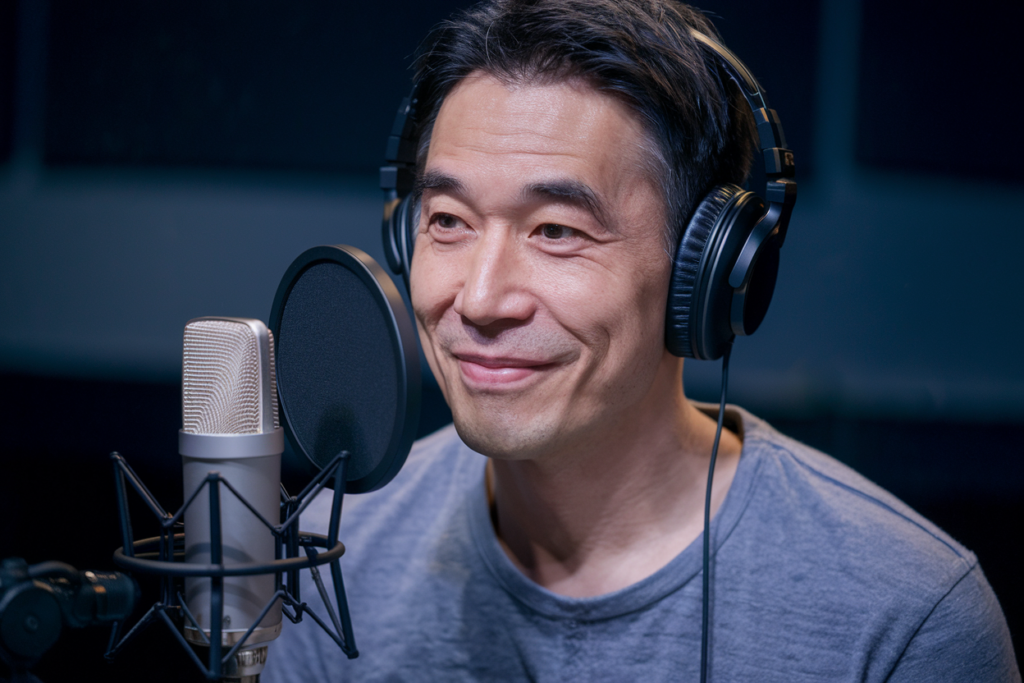Key Takeaways
- Understanding Localization: Effective video localization requires more than translation; it involves cultural adaptation to resonate with Japanese audiences.
- Cultural Relevance: Tailoring content to fit local customs, traditions, and humor enhances viewer engagement and builds trust.
- Language Nuances: Utilizing native voice talent familiar with unique expressions and levels of politeness ensures authentic delivery and emotional connection.
- Dubbing vs. Subtitles: Choose between dubbing or subtitling based on your audience’s preferences to maximize engagement while preserving the original intent.
- Tools and Resources: Leverage software solutions like Translation Management Systems and professional services for high-quality localization outcomes.
- Addressing Challenges: Be mindful of technical issues and cultural misinterpretations during the localization process to enhance viewer experience.
Ever wondered how to truly connect with a Japanese-speaking audience? Localizing video content isn’t just about translation; it’s about crafting an experience that resonates culturally and emotionally. With Japan’s unique language nuances and cultural references, getting it right can make all the difference in your engagement levels.
Understanding Localization
Localization involves more than translating words; it requires adapting content to resonate with a specific audience, in this case, Japanese speakers. You need to consider cultural nuances and context that might influence how your message is received.
When localizing video, think about the voiceover elements. The choice of voice talent plays a crucial role in conveying emotion and authenticity. A native Japanese voice artist can bring depth to your content, ensuring it feels relatable and engaging. Selecting the right voice over talent creates an immediate connection with viewers.
Additionally, pay attention to cultural references within your video. What works in one culture may not translate effectively into another. For instance, idioms or humor that’s popular in English might fall flat without proper localization for a Japanese audience.
You’ll also want to adapt visuals alongside audio elements. Colors, symbols, and even gestures hold different meanings across cultures. Ensuring these aspects align with local expectations enhances viewer experience.
Incorporating localized subtitles can further improve accessibility while showing respect for the language preferences of your audience. This approach not only helps non-native speakers but also reinforces engagement among all viewers.
Ultimately, effective localization ensures your video resonates deeply with its intended audience by combining culturally relevant content with high-quality production values like skilled voiceovers and thoughtful visual adaptations.
Importance of Localizing Video
Localizing video content for a Japanese-speaking audience is essential. It ensures that your message resonates with viewers on a deeper level, fostering genuine connections.
Cultural Relevance
Cultural relevance plays a crucial role in localization. It’s not just about translating words; it’s about adapting your content to fit the cultural context of Japan. That means considering local customs, traditions, and social norms. For instance, humor that works in one culture may not translate effectively in another. Using culturally appropriate references and visuals makes your content relatable and engaging. This connection enhances viewer engagement and builds trust with your audience.
Language Nuances
Language nuances are vital when localizing video for Japanese speakers. The language has unique expressions, idioms, and levels of politeness that vary based on context or relationships. Choosing the right voiceover talent familiar with these subtleties can significantly impact how well the message is received. A native voice artist understands these nuances and delivers lines authentically, capturing emotions that resonate with viewers. Moreover, localized subtitles should reflect these nuances accurately to ensure clarity without losing meaning or intent.
By focusing on cultural relevance and language nuances, you create videos that connect deeply with your Japanese-speaking audience while maintaining high-quality production values.
Best Practices for Localizing Video
Localizing video content for a Japanese-speaking audience requires attention to detail and cultural nuances. Here are some best practices to ensure your video resonates well with viewers.
Translation and Subtitling
Focus on accurate translation that respects the original tone and context. Employ professional translators familiar with both English and Japanese cultures, as they understand how to convey messages effectively. Use localized subtitles rather than direct translations, ensuring they capture colloquial expressions and idiomatic phrases unique to Japanese culture. This approach enhances comprehension while maintaining the video’s emotional impact.
Dubbing vs. Subtitles
Consider whether dubbing or subtitling serves your video’s purpose better. Dubbing involves replacing the original audio with a voiceover performed by native speakers who can deliver lines naturally, matching the on-screen emotions perfectly. This method fosters deeper engagement but requires skilled voice artists who can embody characters authentically.
On the other hand, subtitles allow viewers to hear the original dialogue while reading translated text, which helps preserve the creator’s intent. Subtitles also cater to diverse audiences, including those who prefer watching without sound or have hearing impairments.
Evaluate your target audience’s preferences when choosing between these methods; understanding their viewing habits can guide you in making an informed decision that maximizes viewer experience and retention.
Tools and Resources for Localization
Utilizing the right tools and resources can significantly enhance your video localization efforts for a Japanese-speaking audience. These solutions streamline processes, improve quality, and ensure cultural relevance.
Software Solutions
Various software solutions facilitate effective localization. Some popular options include:
- Translation Management Systems (TMS): TMS platforms like Smartling or Lokalise manage translation workflows efficiently. They keep all translations organized, allowing multiple stakeholders to collaborate seamlessly.
- Subtitle Editors: Programs such as Aegisub or Subtitle Edit allow you to create and synchronize subtitles easily with your video content. These tools support different file formats, making it simple to export the final product.
- Voice Over Software: Applications like Audacity or Adobe Audition enable recording high-quality voiceovers. You can edit audio tracks to ensure clarity and emotional resonance that aligns with local expectations.
Harnessing these software tools ensures streamlined workflows while maintaining high production values throughout your project.
Professional Services
Engaging professional services elevates the quality of your localized content significantly. Consider the following options:
- Translation Professionals: Hiring native Japanese translators ensures accurate language adaptation that respects cultural context. They capture nuances and colloquialisms that automated systems often miss.
- Voiceover Talent: Collaborating with skilled voice artists enhances viewer engagement through authentic delivery. Native speakers possess an innate understanding of tone, pitch, and emotion, creating a connection with audiences that resonates deeply.
- Localization Consultants: Experts in cultural adaptation can guide you in adjusting visuals, references, and even humor for maximum impact on your target audience. Their insights prevent costly missteps by ensuring all aspects align with local customs and traditions.
Leveraging these professional services not only improves comprehension but also enriches the overall viewing experience for your Japanese audience.
Challenges in Localizing Video
Localizing video for a Japanese-speaking audience presents unique challenges that require careful consideration. These challenges include technical issues and cultural misinterpretations, both of which can significantly impact viewer engagement.
Technical Issues
Technical aspects play a crucial role in the localization process. You may encounter problems with audio synchronization when adding voiceovers to your video. Ensuring that the dialogue aligns perfectly with the visuals is essential for maintaining immersion. Inaccurate timing can lead to distractions, diminishing the overall experience.
Additionally, file formats and resolution must be compatible with various platforms used by Japanese audiences. High-quality video production requires attention to detail regarding encoding settings and subtitle formats as well. Neglecting these technical factors may result in poor playback quality or accessibility issues for viewers.
Cultural Misinterpretations
Cultural nuances often pose significant hurdles during localization efforts. Certain phrases, idioms, or humor might not translate effectively into Japanese culture, leading to confusion or unintended offense. Understanding local customs and social norms is vital for creating content that resonates emotionally with your audience.
Moreover, adapting visual elements along with language also matters greatly. Symbols or imagery familiar to Western viewers may not hold the same meaning in Japan, requiring thoughtful adjustments in design choices and storytelling techniques.
Engaging native voice talent can help bridge some of these gaps by providing an authentic sound that reflects local sensibilities and preferences. Using professional voice artists ensures that emotional tones are conveyed accurately while respecting cultural contexts.
By addressing these technical issues and cultural misinterpretations head-on, you enhance your chances of connecting deeply with a Japanese-speaking audience through localized video content.
Conclusion
Localizing video content for a Japanese-speaking audience isn’t just about translation. It’s about crafting an experience that resonates culturally and emotionally. By understanding the nuances of the language and the cultural context, you can create videos that truly connect with viewers.
Investing in professional services—like native voice talent and skilled translators—can make a significant difference in your localization efforts. Utilizing tools to manage workflows and enhance audio quality will further improve viewer engagement.
When done right, localization opens up new opportunities for deeper connections with your audience, ensuring your message is not only heard but felt. Embrace these strategies to elevate your content’s impact within the Japanese market.
Frequently Asked Questions
Why is localization important for Japanese video content?
Localization is crucial because it goes beyond simple translation. It ensures that video content resonates culturally and emotionally with the Japanese audience, taking into account language nuances, cultural references, and social norms to enhance viewer engagement.
What are the key elements of effective video localization?
Effective video localization includes accurate translation, adaptation of cultural references, careful selection of visuals, and using appropriate voiceover talent. These elements work together to create relatable content that connects deeply with the target audience.
Should I choose dubbing or subtitling for my videos?
The choice between dubbing and subtitling depends on your target audience’s preferences. Dubbing allows for natural engagement through native voices, while subtitles preserve the original dialogue but might require viewers to read alongside watching. Understanding your audience’s habits will guide this decision.
How can I ensure cultural relevance in my localized videos?
To ensure cultural relevance, adapt content to fit Japan’s customs, traditions, and language nuances. This includes using suitable humor and visual symbols that resonate with local audiences while avoiding potential misunderstandings or offenses related to cultural differences.
What tools can help in the localization process?
Several tools can aid in video localization, including Translation Management Systems (TMS), subtitle editors for synchronization, and voiceover software for recording quality audio. Engaging professional services like translators and voice actors also enhances accuracy and effectiveness in adaptation.
How do language nuances affect video localization?
Language nuances are significant as they include unique expressions and levels of politeness essential for conveying messages appropriately. Misunderstanding these nuances can lead to misinterpretation or a lack of emotional impact on the audience.
What challenges might arise during video localization for a Japanese audience?
Challenges may include technical issues like audio synchronization problems or file format compatibility. Additionally, misinterpreting cultural nuances could lead to confusion or offense if visual elements are not carefully adapted to align with local expectations.







